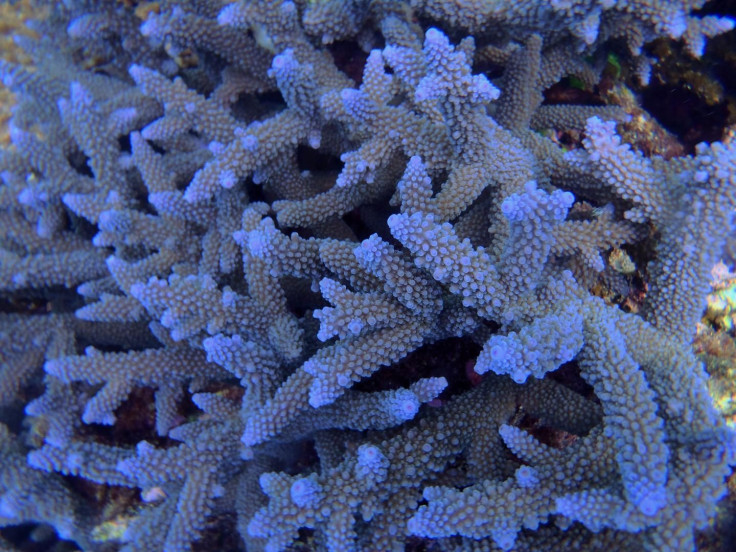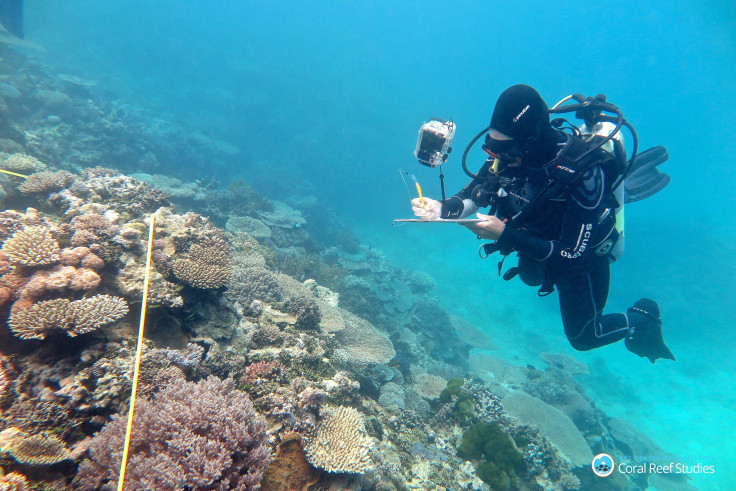Great Barrier Reef Bleaching For Second Consecutive Year, 2016 Impact Worse Than Thought Earlier

The Great Barrier Reef, a 1,400-mile World Heritage Site along Australia’s east coast, is in trouble, and that trouble is growing to proportions that might soon become impossible to alleviate. The colorful corals that make the site an attractive destination are undergoing a second consecutive year of bleaching and the effects of the bleaching in 2016 are significantly worse than previously estimated.
In an announcement Monday, the Australian government’s Great Barrier Reef Marine Park Authority said an estimated 29 percent of shallow water corals died due to bleaching — caused by rising ocean temperatures — during 2016. The number was revised upward from 22 percent, which was the estimate given in mid-2016.
Most of the coral deaths occurred in the northern parts of the Reef, and the area worst-affected was north of Port Douglas, where an estimated 70 percent of shallow water corals died. Data from aerial and in-water surveys showed a clear reduction in impact, moving north to south. Bleaching was also observed in depths lower than divers surveyed, but coral mortality for those parts could not be systematically assessed.
Read: Understand Eating Habits Of Fish Could Help Save Coral Reefs
“The amount of coral that died from bleaching in 2016 is up from our original estimates and, at this stage, although reports are still being finalized, it’s expected we’ll also see an overall further coral cover decline by the end of 2017,” Russell Reichelt, Great Barrier Reef Marine Park Authority chairman said in a statement.

Bleaching is the name given to the phenomenon wherein corals, under conditions of stress like warm water temperature, expel the colorful algae that live inside them and become devoid of color. Since corals and algae have a symbiotic relationship, with the latter providing about 90 percent of the former’s energy needs, corals die soon after bleaching.
Other than bleaching, another factor that will likely influence the Reef in a substantial way during 2017 is the tropical cyclone Debbie, which had hit the region for two weeks between March and April, and impacted about a quarter of the Reef. There are also other ongoing impacts from coastal run-off that degrade the water quality, schools of crown-of-thorns fish that prey on corals and coral disease that is exacerbated by thermal stress.
Data from recent surveys show the bleaching pattern in 2017 is similar to the 2016 pattern, but a complete picture for the year will be available only in early 2018. However, the statement added the long-term trend of a decline in coral cover was expected to continue, and recovery from bleaching events was also expected to be slower, compared to other impacts.
“As has been the case with reefs across the world, the Great Barrier Reef has experienced significant and widespread impacts over the last two years. We’re very concerned about what this means for the Great Barrier Reef itself and what it means for the communities and industries that depend on it,” Reichelt said.
While the Reef is reeling under the combined onslaught from these various factors, there is some hope in the south, where the absence of these inclement impacts has allowed the corals to flourish and the Reef to recover strongly.
Following a meeting earlier in May, Australia’s Reef 2050 Plan Independent Expert Panel issued a statement which expressed the members’ “concern about the seriousness of the impacts facing the Reef and concluded that coral bleaching since early 2016 has changed the Reef fundamentally. There is great concern about the future of the Reef, and the communities and businesses that depend on it, but hope still remains for maintaining ecological function over the coming decades.”
© Copyright IBTimes 2024. All rights reserved.





















